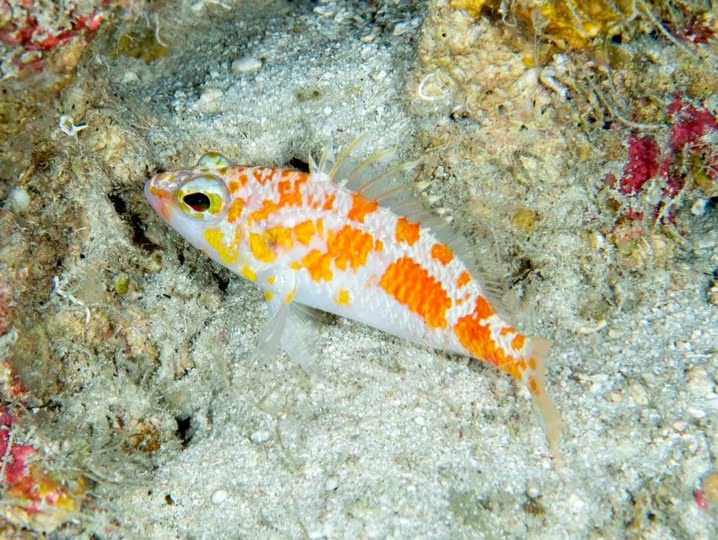A newly discovered species of Plectranthias perchlet, Plectranthias raki sp. nov., has been identified in the mesophotic coral ecosystems of the Maldives, adding to the growing knowledge of deep-reef biodiversity. Found at depths of 100–125 meters, this species exhibits a unique combination of morphological traits and striking coloration, distinguishing it from its 66 known congeners.
The new species is characterized by a dorsal fin with 10 spines and 15 soft rays, an anal fin with three spines and seven rays, and 13 pectoral-fin rays, all unbranched. It possesses a complete lateral line with 30–32 tubed scales, 11–12 circumpeduncular scales, and 5 + 12 gill rakers. Notably, Plectranthias raki lacks antrorse or retrorse spines on the preopercle’s ventral margin, further setting it apart from related species.
In life, Plectranthias raki displays a white to light pink body adorned with two indistinct rows of irregularly shaped red-orange to yellow-orange patches along the dorsal two-thirds. Its opercle and maxilla are golden-yellow, while its dorsal fin bears an indistinct yellow stripe. Additional yellow markings include two spots near the anal fin base and two irregular spots on the centermost caudal-fin rays.
The specimens were collected using hand nets while diving on closed-circuit rebreathers. They were subsequently analyzed through morphological measurements and DNA sequencing at the California Academy of Sciences. The holotype is housed at the California Academy of Sciences ichthyological collection (CAS-ICH 248439), while the paratype is stored at the Natural History Museum of Los Angeles County (LACM 61827).
This discovery underscores the importance of continued exploration in mesophotic coral ecosystems, particularly in understudied regions such as the Indian Ocean. As deep-reef environments remain largely unexplored, further ichthyological surveys may reveal even more hidden biodiversity within these twilight zones of the ocean.



